
Image: Mikael Lundgren

Image: Mikael Lundgren
FEATURE Among workplaces at the University, Bildmuseet contemporary art museum stands out somewhat. As a visitor, you have probably met some of the museum hosts, but behind the scenes there are another ten people: curators, technicians, art educators, an administrator and a communications officer. In this article, you’ll get to meet some of them during a day at Bildmuseet.
It's mid-morning at Bildmuseet and Sorcha Stott-Strzala is peeling off layer after layer of warm clothing in the cloak room. She comes from Manchester and is studying curating at Goldsmiths, University of London, and has started her placement training at Bildmuseet during the coldest week of the year. This morning registered —23 degrees Celsius.
"Luckily, I got to borrow a hat and ski pants from my teacher before I left," says Sorcha with a laugh.
"That's no problem, though," she says unconcerned, "Not as long as I get some power into the radiators of the apartment at Lars Färgares Gård. Do you have any cross-country skis to spare?"
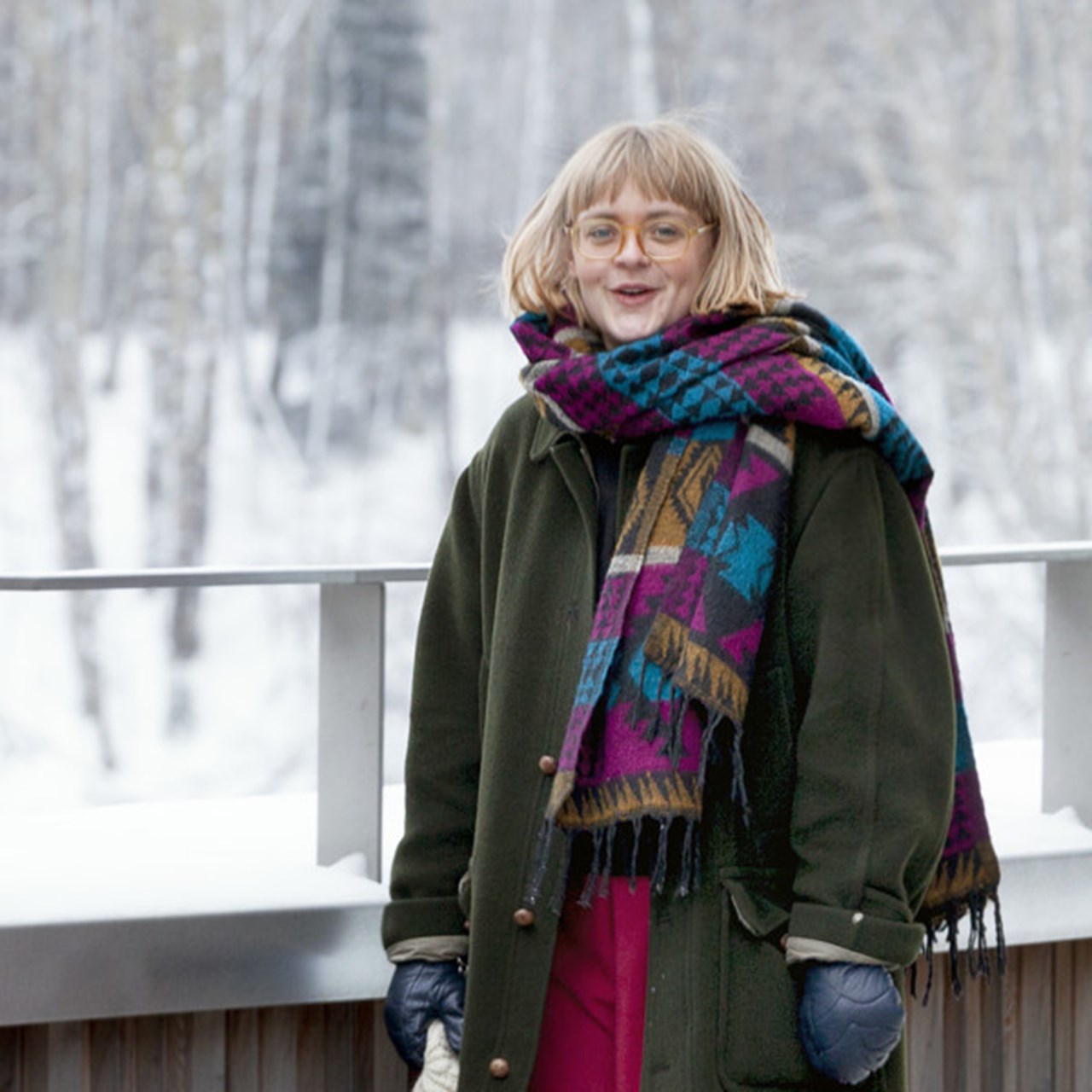
Curator intern Sorcha Stott-Stralza from London came well-prepared for both cold weather and exhibition production.
PhotoPolly YassinSorcha's placement at Bildmuseet will last the whole spring term. Despite the extreme climate, she doesn't seem to have any issues with making herself at home in Umeå. Ice skating at Lake Tavelsjö — check. Raving at Verket — check. At Bildmuseet, her task is to assist in various exhibition projects and plan the autumn performance weekend, a collaboration between Bildmuseet and Vita Kuben at the Norrlandsoperan Opera in Umeå.
"I'm looking forward to it. In London, I spend a lot of my time with dance, theatre and queer performance art, so this is a suitable task. I'll also be working with a really interesting exhibition on arts and physics together with Museum Director Katarina Pierre."
In the brightly lit work room nearby, curator Sofia Johansson is planning a summer exhibition with a highly topical theme. Eco-visionaries is opening in June, and today, an assistant to one of the participating artists will pay a visit.
"This exhibition is something of a personal favourite," says Sofia while waiting. "To me, there's something inspiring in the visionary art projects we have chosen. No paralysing climate anxiety, but instead creative ideas and visions of our relation to nature."
Now in the last few months before the exhibition, Sofia Johansson is in close contact with the artists. Since they are spread across the world, Skype is the natural way to meet. But certain issues need to be discussed on site. Art assistant Polonca Lovšin has travelled here from Ljubljana, Slovenia, to discuss the installation of one of the works of art. Sofia is guiding her guest around the exhibition room, measuring surfaces and the ceiling height, all the while describing how visitors will move through the room. Museum technician Olle Ebgen-Ljungblad has prepared some colour samples that they look at together.
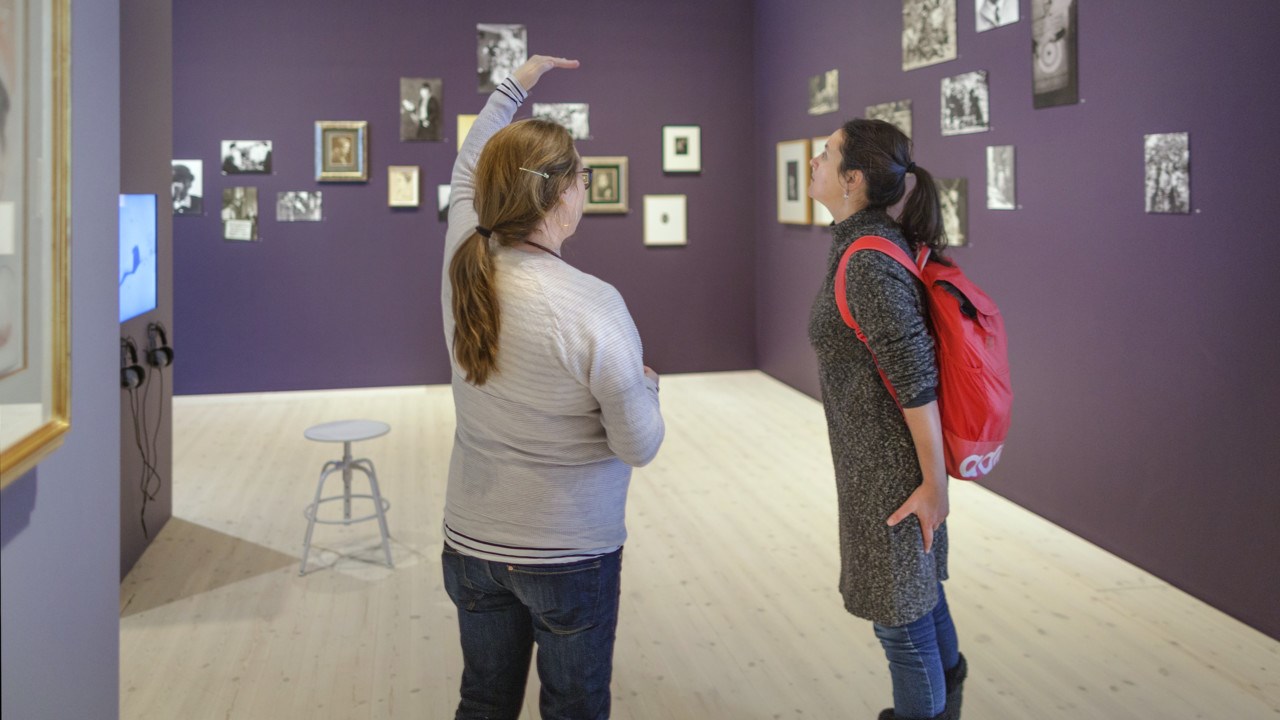
Curator Sofia Johansson and assistant Polonca Lovšin from Slovenia are discussing the placement of one of this summer's works of art in the exhibition Dada is dada.
PhotoPolly YassinOlle is an artist himself, and sees his understanding of art as an important asset to his work as a museum technician. He can imagine what artists want to portray, and based on that, contribute his technical expertise to achieve creative and aesthetical solutions.
"For Eco-visionaries, we will for instance be building a small school building according to the artist's instructions," he says. "This afternoon, I'm taking Polonca to a timber yard to look at materials for roofs and walls."
But first, another meeting with another of today's visitors. In the office downstairs awaits curator Brita Täljedal together with Sara Lundberg, the author of Fågeln i mig flyger vart den vill, which took home the Swedish literary August Prize and the Swedish Picture Book of the Year Award. The latter was awarded at Littfest 2018 — Umeå international literary festival — and in conjunction with that, Bildmuseet is presenting the winning book in an exhibition. Olle has brought drawings of how it could be designed.
Sara Lundberg presents sketches and original pictures from the book on the big table in the conference room. Together, they pick out and sort the fine-tuned and colourful watercolour paintings and gouaches, discussing how the images should be grouped and displayed. Brita Täljedal is on the jury of the picture book award and says that they had some intense and fun discussions before deciding on this year's winner.
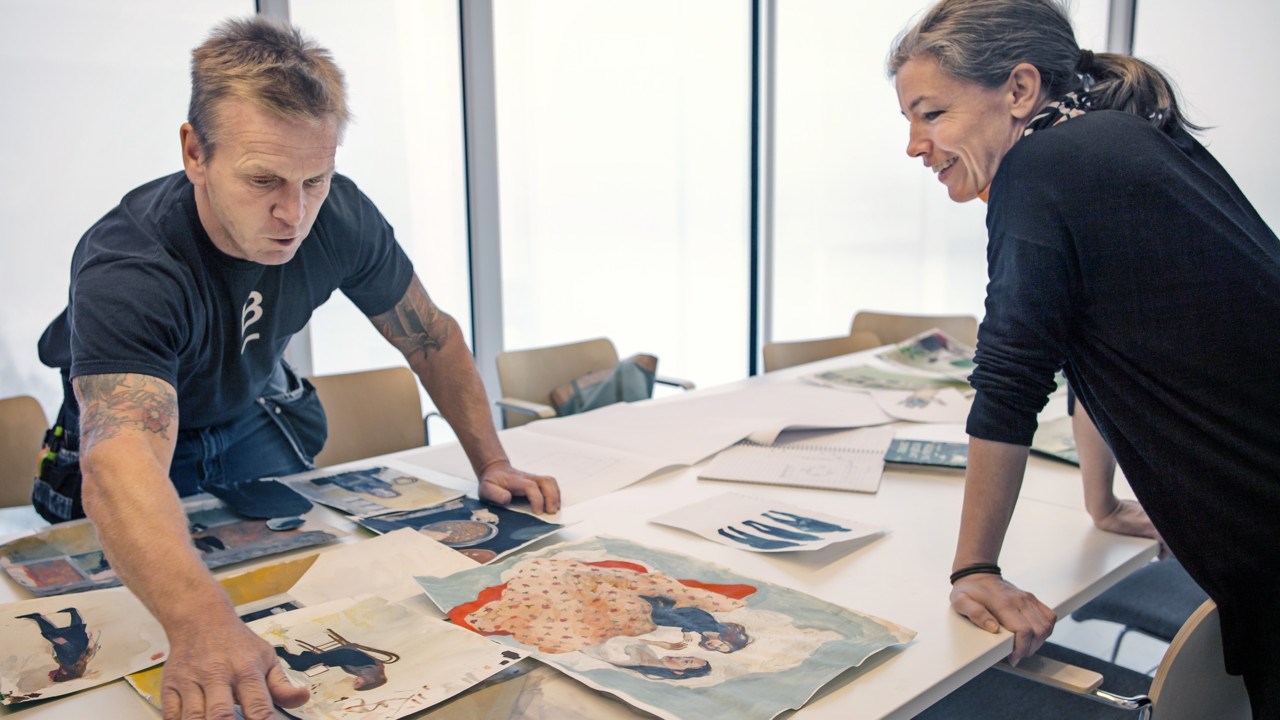
Museum technician Olle Ebgen Ljungblad is grouping Sara Lundberg's paintings together.
PhotoHelena Vejbrink"Some fantastic books were among the nominees, but this one stood out. For its magnificent pictures of course, but to me, it was also the entirety — how it lies in your hand and how the pages turn," says Brita.
Deep concentration can also be found in the art workshop. Students from the upper-secondary school aesthetic programme are making collages under supervision of art educator Karin Jonsson. Bildmuseet annually welcomes a hundred school classes, from preschool to adults. This particular class is a part of an educational collaboration between Bildmuseet and Midgårdsskolan upper-secondary school. Once per week, they visit Bildmuseet to explore art and test various art techniques.
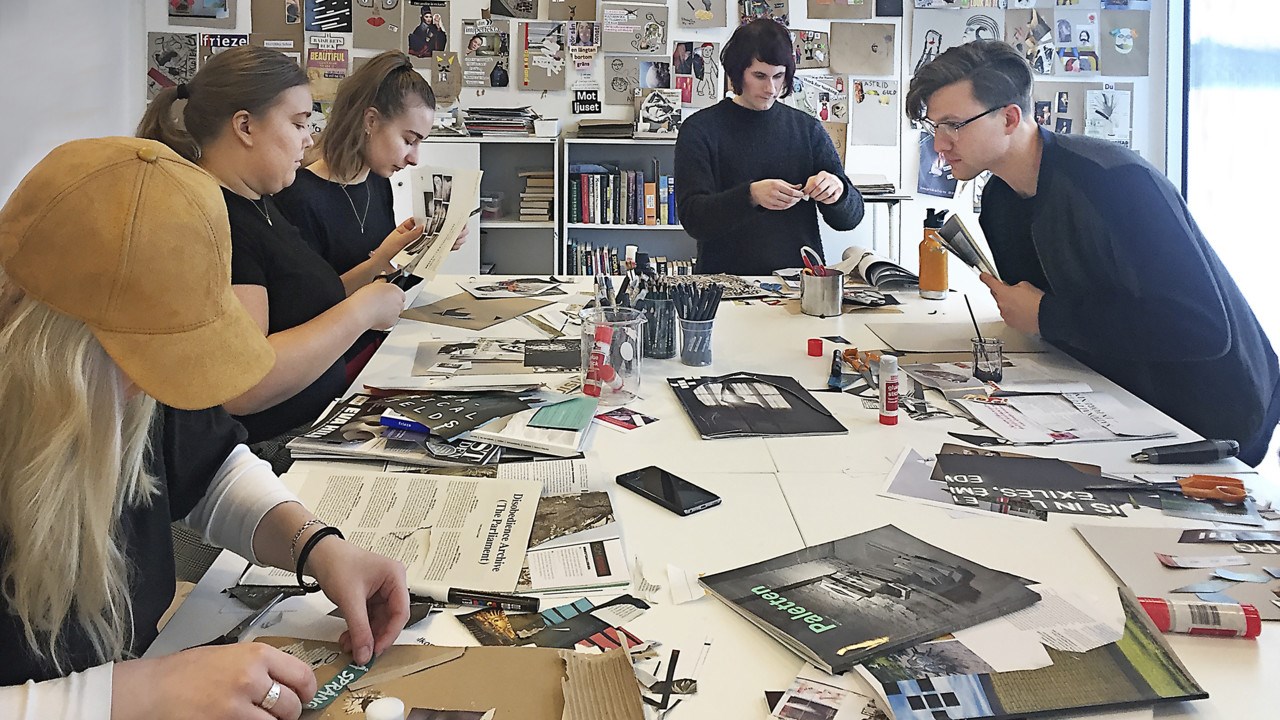
Upper-secondary school pupils create collages at Bildmuseet.
PhotoKarin Jonsson/Bildmuseet"Working with the group for some time opens up for more opportunities," says Karin. "When it comes to creation, of course, but also in the dialogues about art. We often collaborate across subject fields, between art education and social sciences, for instance. Based upon the themes of art, we can chat about topics such as social issues, identity, or language."
In ten minutes, at 12:00, today's lunch tour of the exhibitions takes place, starting at the reception desk on level 1. Welcome!
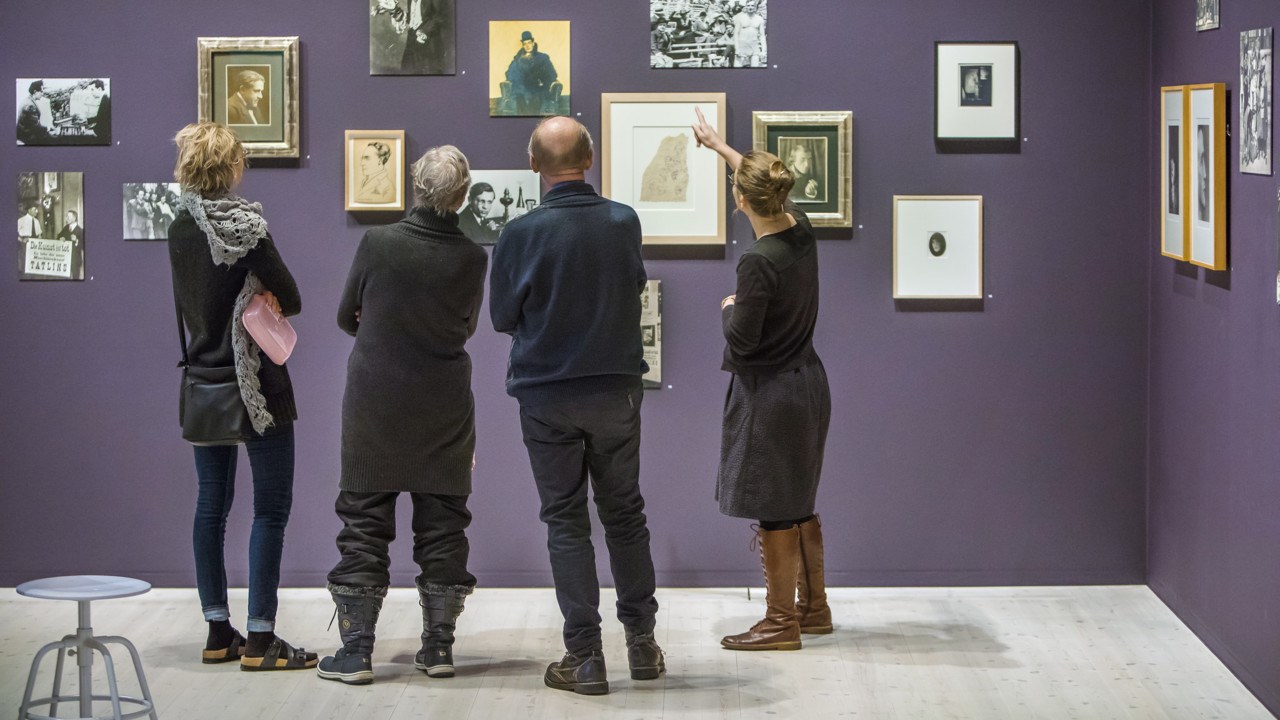
Lunch viewing: Museum host Emma Mårtensson is presenting the exhibition Dada is dada to today's visitors.
PhotoMattias PetterssonThe loudspeaker voice can be heard throughout the building. Emma Mårtensson is the guide for today's tour. She is one of the museum hosts who welcomes the 80,000 visitors to Bildmuseet every year.
Everyone should feel welcome, regardless your prior knowledge about art, and regardless of if you want to browse around on your own or take a guided tour.
"The exhibitions we display are interesting both to those who want to dig deep into a few things and those who seek an experience to wow them," says Emma.
Soon, some visitors turn up at the reception desk. Emma chats to them while waiting for more to show up. When the clock strikes twelve, she takes the little group to the sixth floor and the large colourful installation by the Korean artist Do Ho Suh.
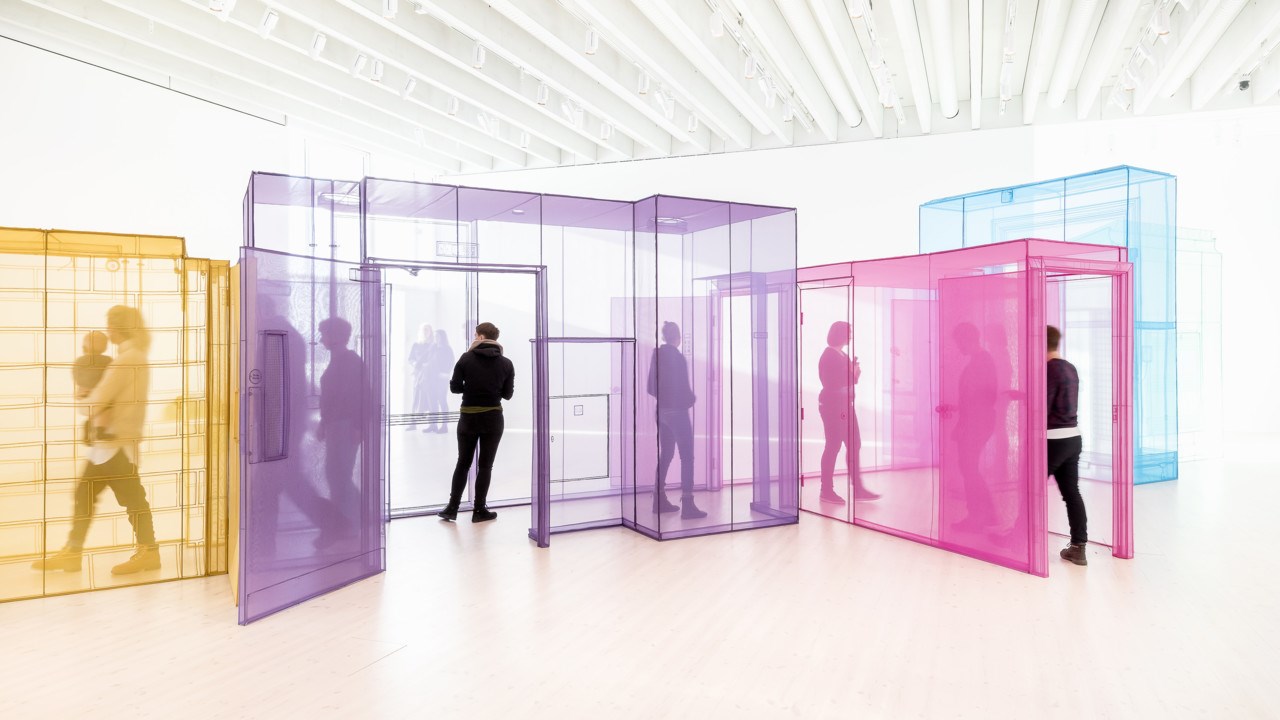
Visitors are strolling through a colourful installation by Korean artiskt Do Hu Suh at the top floor of Bildmuseet.
PhotoMikael Lundgren"I know. You just want to touch it, don't you?" Emma is prepared and takes out a piece of transparent fabric of the same sort and turquoise colour as in the delicate installation. She passes it among the visitors while vividly talking about the work of art and the artist behind it.
Since it's Friday and the museum has its regular evening event, a lot needs to be taken care of in the afternoon. Tonight, they are hosting a theatre performance about the female Dadaists in the exhibition Dada is Dada. While visitors come and go, the sound system is being rigged by the bar, signs are placed in the great hall, and candles are being lit. Tickets are nearly sold out for the this evening's performance. Carefully, the display cases and walls inside the exhibition are moved to make room for a stage and a seated audience of a hundred people.
Bildmuseet's initiative to organise Art Fridays has been popular with Umeå residents, although there is still some nervousness among the staff about the outcome. But also this evening was a success, and curator Lisa Lundström lets out a sigh of relief. She organised this evening's event from planning to execution, and has also hosted the actors during the day. By nine o'clock, when the last visitor has left, she feels both tired and satisfied.
"The atmosphere during the theatre performance really was spiritual. It was as if the artists came alive," says Lisa.
Text: Helena Vejbrink
Photo (in top): Mikael Lundgren
Translation: Anna Lawrence
This article was first published in the magazine Aktum no. 1 2018.
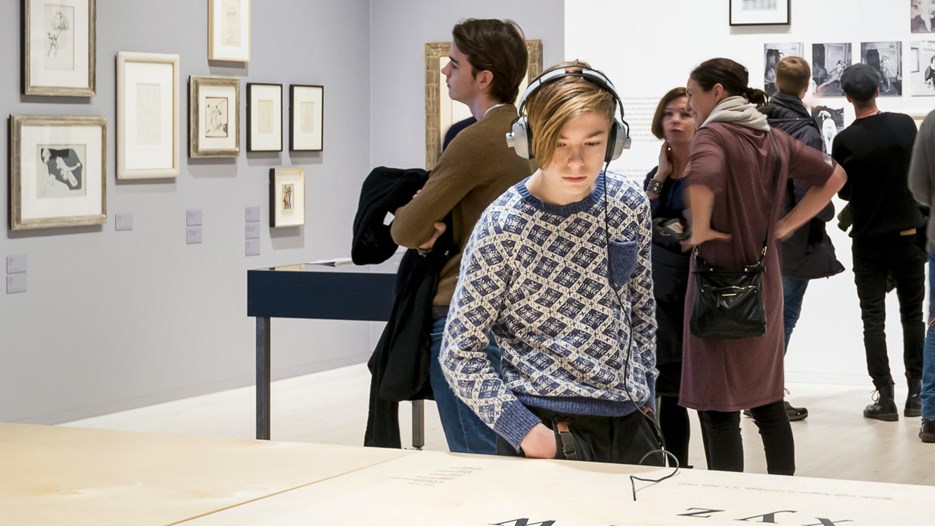
More photos from Bildmuseet.
Image Mikael Lundgren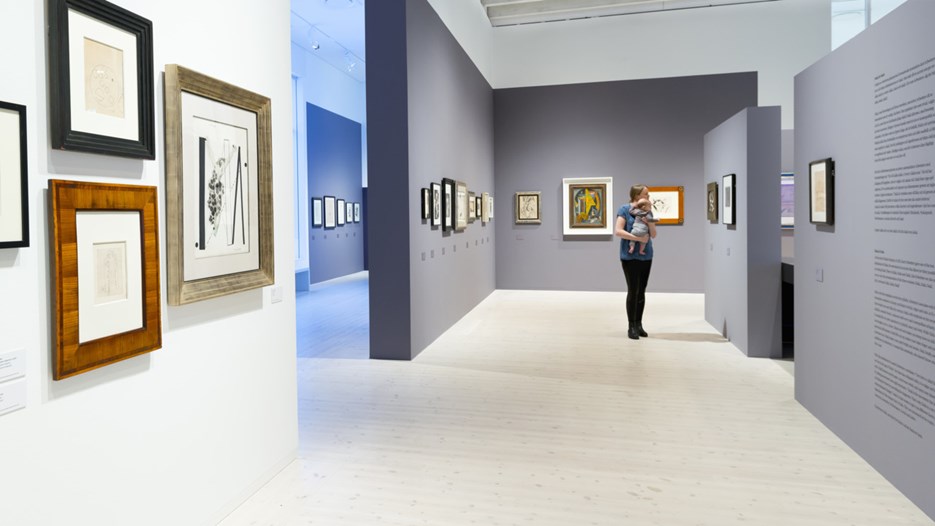
Bildmuseet aims to reach an audience of all ages. Here the exhibition Dada is dada.
Image Mikael Lundgren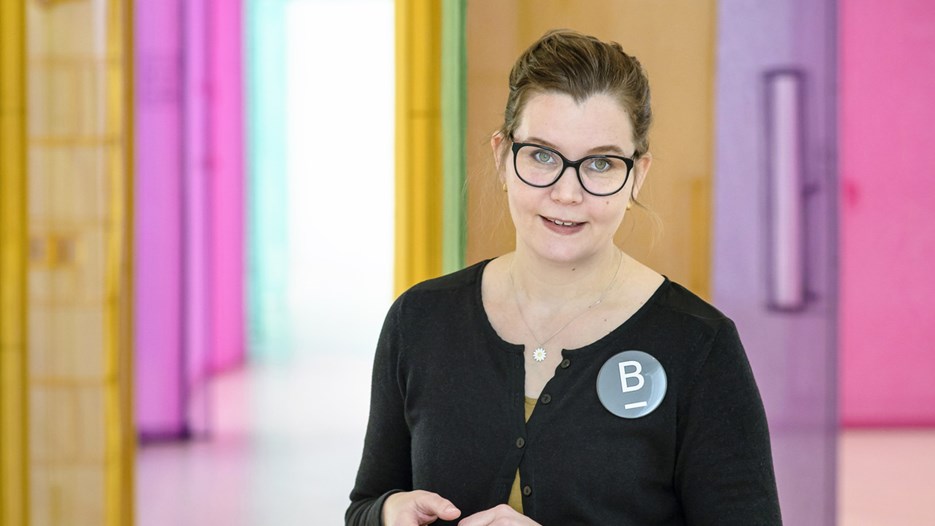
Museum host Emma Mårtensson presents the exhibitions for visitors.
Image Mattias Pettersson Ulrika Bergfors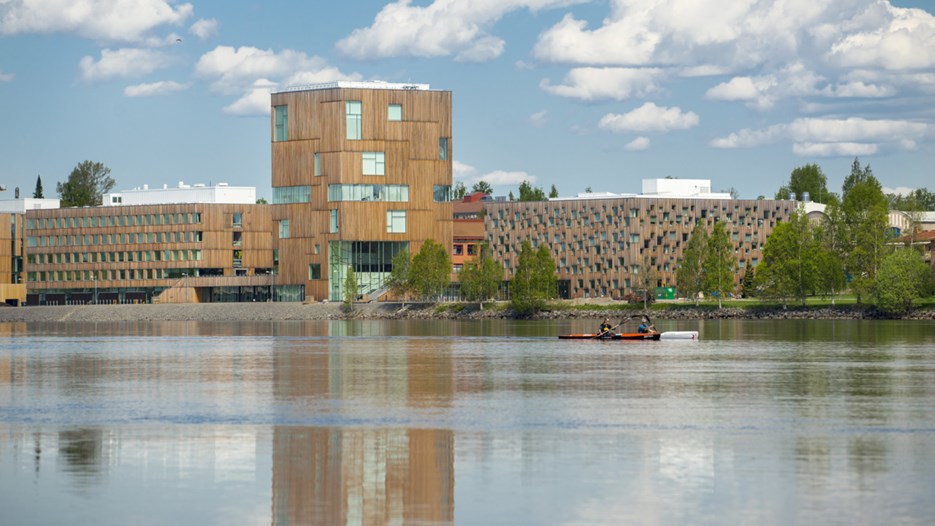
Bildmuseet – the tall building – is located on the Arts campus at the Umeälven.
Image Mikael Lundgren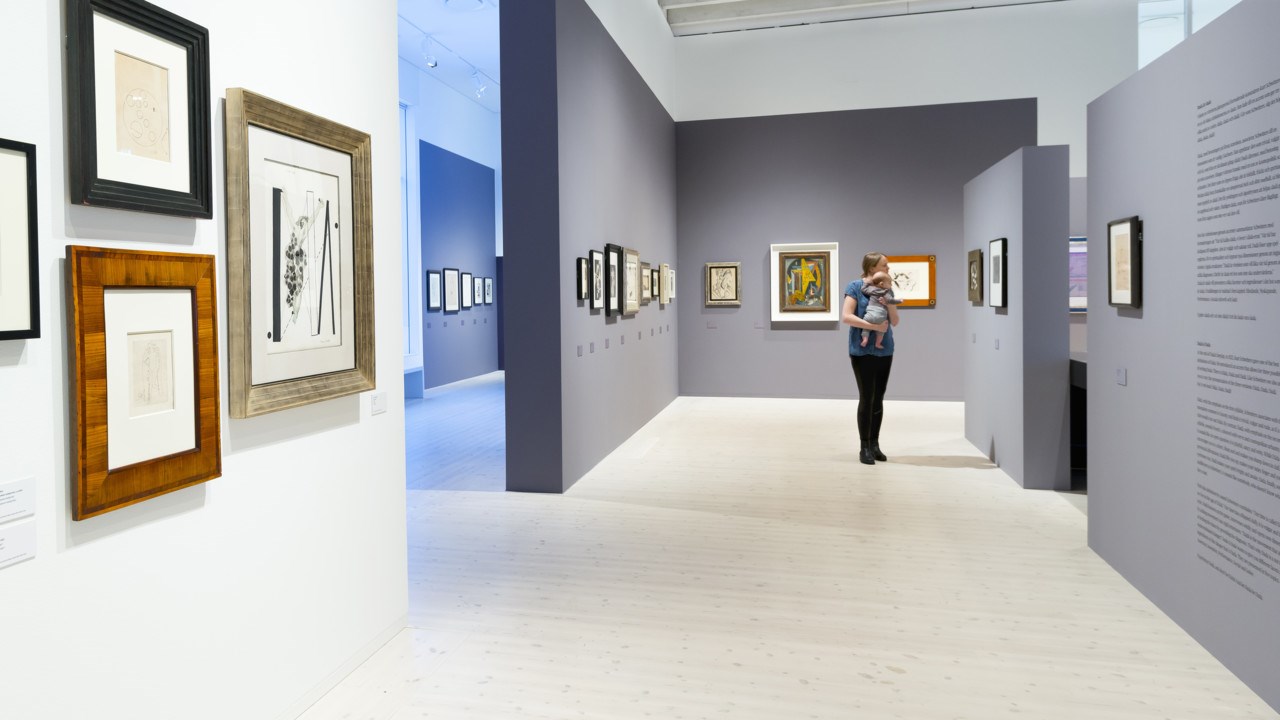
Bildmuseet aims to reach an audience of all ages. Here the exhibition Dada is dada.
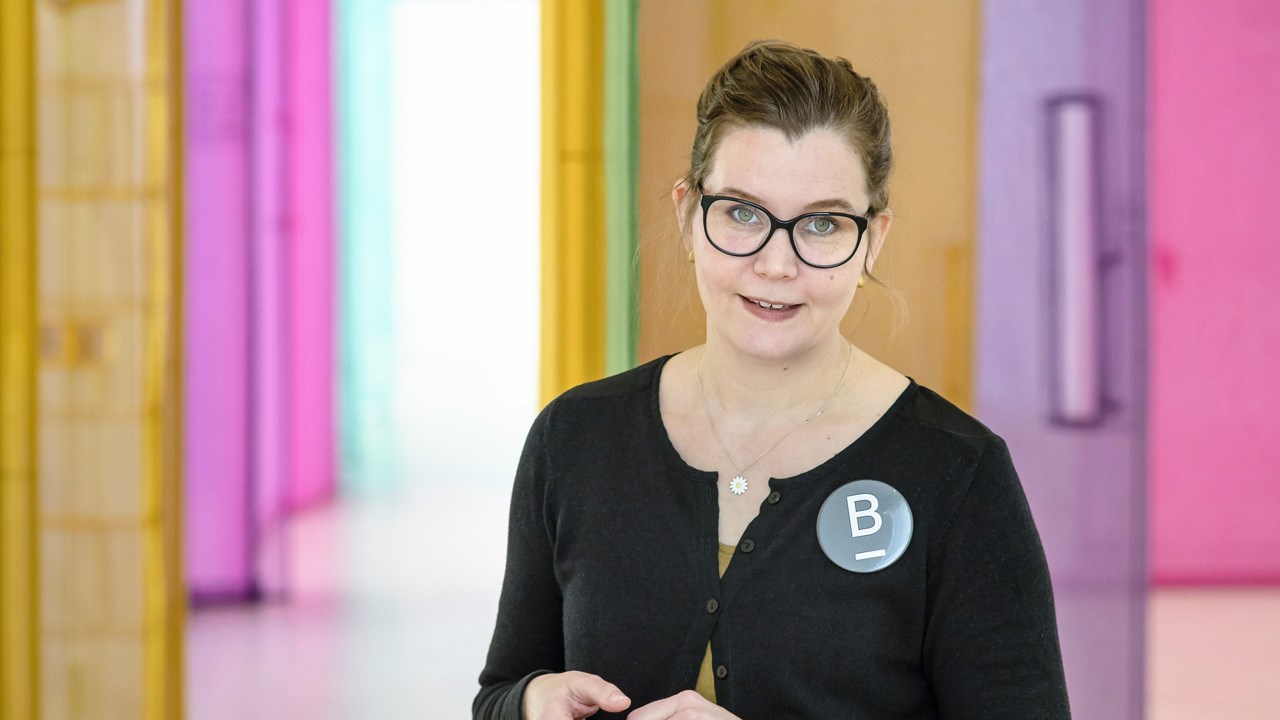
Museum host Emma Mårtensson presents the exhibitions for visitors.
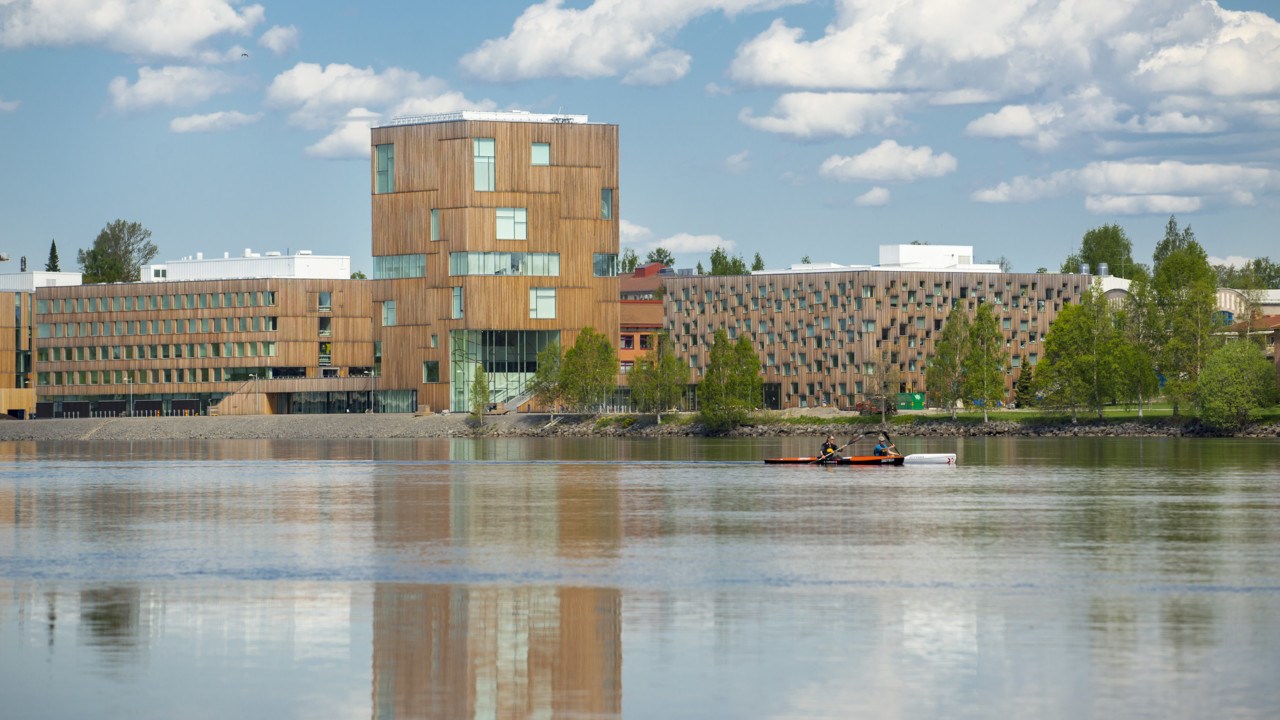
Bildmuseet – the tall building – is located on the Arts campus at the Umeälven.